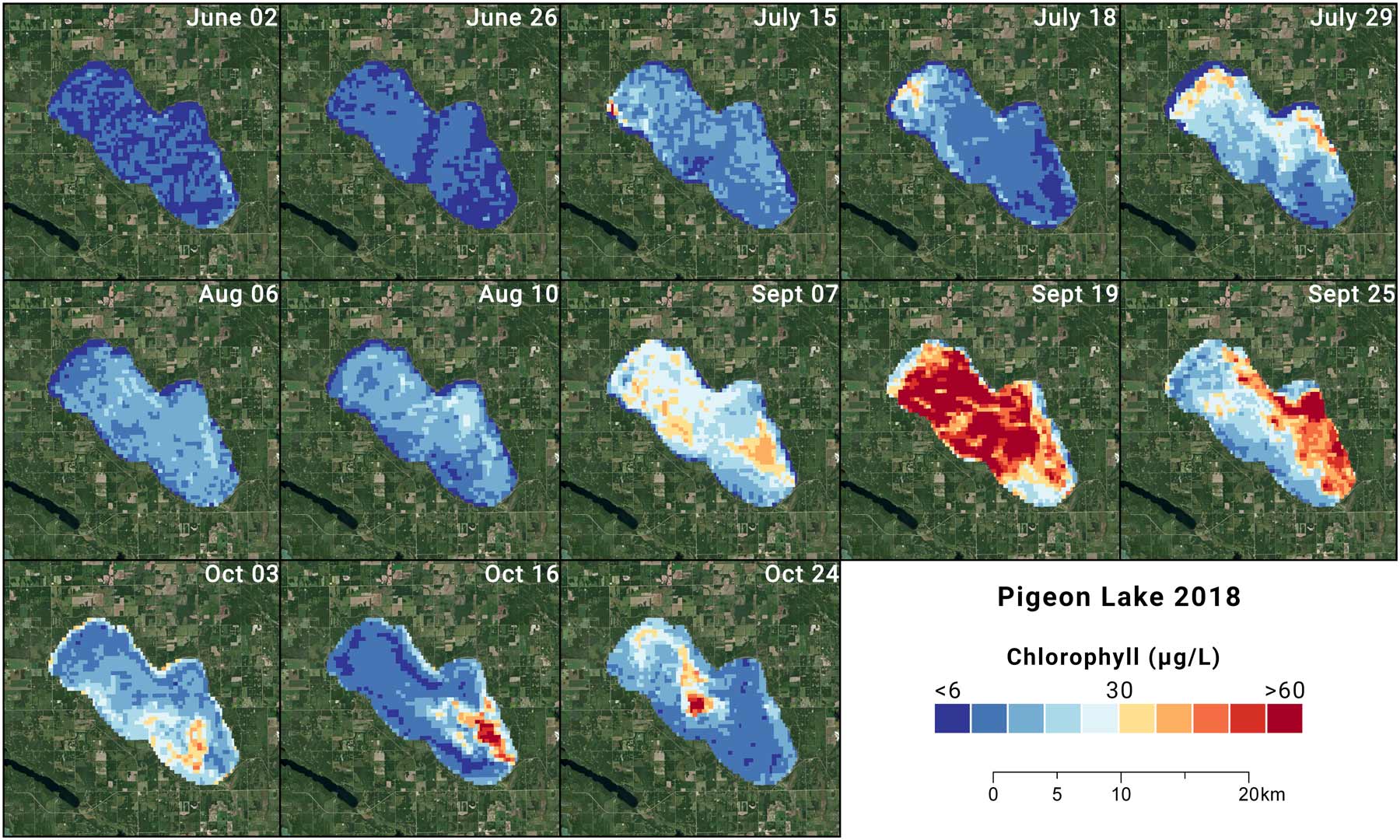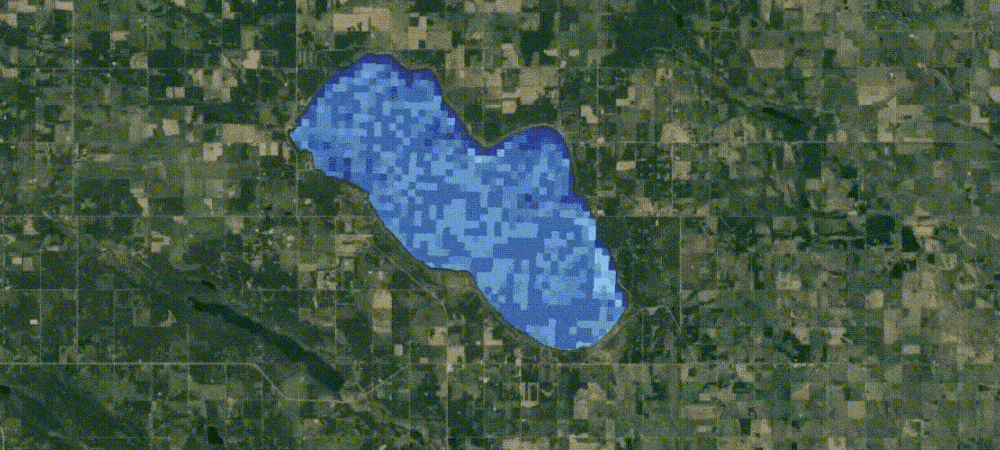
Blue-green algal blooms peaked in September 2018. Although the blooms are off to a slower start this year due to atypical summer weather, we may very well see a rebound in populations-especially if the late summer and fall are warm, dry, and calm. View the blooms' time-lapse in the gif at the end of this story. Images courtesy of Evan DeLancey.
The end of July, and all is calm relative to recent summers with blue-green algae in Albertan lakes. Across the province, fewer-than-usual health advisories related to blue-green algal blooms have been issued. But a slow start doesn't mean the problem is going away, explained University of Alberta biologist Rolf Vinebrooke.
"It has a lot to do with the odd spring we've had this year," said Vinebrooke, professor in the Department of Biological Sciences. "March was warm, but a chilly April and May meant there was still ice on many lakes in the beginning of May. This delayed growing season means that lakes that typically see algal problems happening in June are only now seeing the beginning of blue-green algal blooms."
Long story short? If you're planning a trip to the lake, go sooner rather than later.
Blue-green algae are a nuisance for lake-goers and fishermen. But blooms can have consequences beyond less-than-ideal swimming conditions. The algae also produce liver and neurological toxins that can affect humans, pets, and other animals. And long-term, blooms can result in biological dead zones as algae eventually decay, depleting oxygen to critically low levels in lakes.
Different every year
Though the blue-green algae are off to a slow start this summer, Vinebrooke explained that we may very well see a rebound in populations-especially if the late summer and fall are warm, dry, and calm.
"There are hints with some of the samples that we're receiving from Alberta Health Services that blue-green algae may be starting to make their appearance," said Vinebrooke. "But if the weather remains cool and rainy, we may see fewer blooms this year. Blue-green algae love warm temperatures, sun, and concentrated nutrients. Rain tends to dilute nutrients and cloudy skies cool temperatures."
Learn more about Vinebrooke's research. For more information about blue-green algae, related health advisories, or to report an algal bloom, visit the Alberta Health Services website.
The following time-lapse depicts the blue-green algal blooms (in yellow, orange, and red) growing over Pigeon Lake in the summer of 2018.
